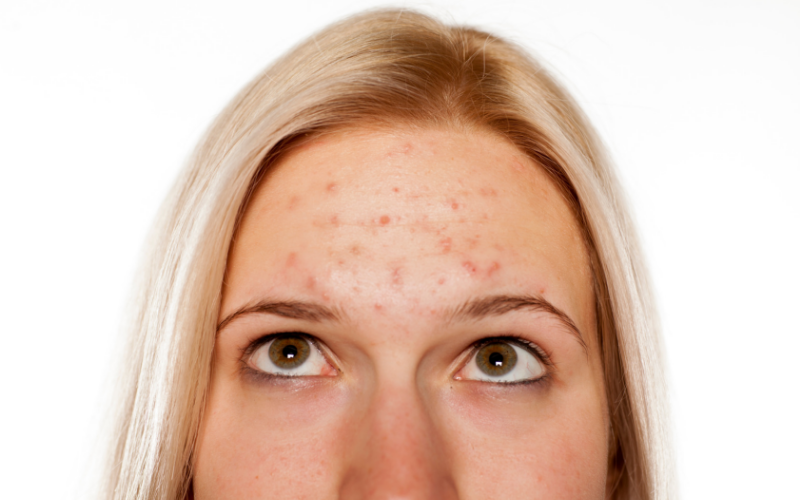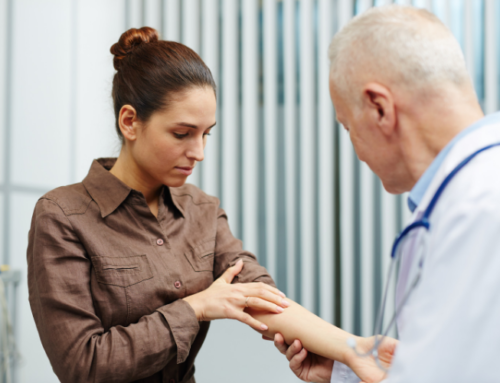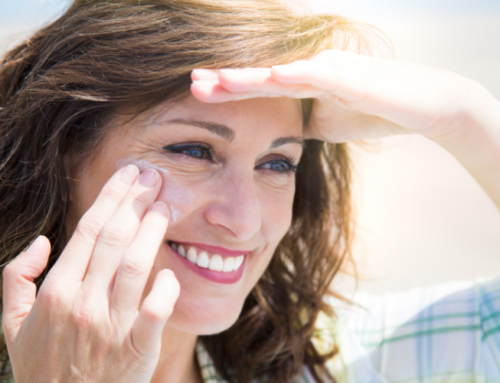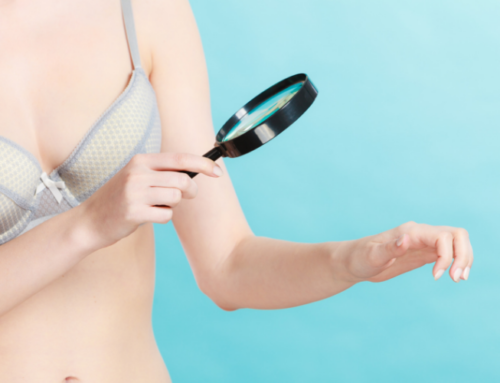Oral antibiotics are commonly prescribed for acne. However, this can lead to antibiotic resistance and can disrupt your skin’s microbiome. Fortunately, there are many alternative treatments for acne, including topical treatment products, in-office treatments, and dietary changes that can clear your skin.
Use the Right Treatment Products for Acne
When managing acne, the first step is to follow the proper skincare regimen for your skin type to combat inflammation, clogged pores, and acne-causing bacteria. Because the acne cycle is eight weeks long, it will take this around amount of time to see full results from changes to your skincare routine. It is important to continue using each product as prescribed to achieve a clear, healthy-looking complexion.
Retinoids, benzoyl peroxide, and natural antimicrobials are some of the best treatment products for acne. These ingredients should be customized for your skin type. For example, benzoyl peroxide can be too drying for dry skin types. Instead, using a cleanser with alpha hydroxy acids in the morning and a retinoid at night could be a more appropriate solution. Oily skin types, on the other hand, typically tolerate benzoyl peroxide better than dry skin types. All skin types can benefit from anti-inflammatory ingredients such as argan oil, niacinamide, evening primrose oil, and chamomile.
In-Office Treatments for Acne
Paired with the proper skincare for your Baumann Skin Type®, the right office treatments can help to enhance your results. Some of the most effective treatments for acne include:
- Acne facials with extractions. These facials are specifically designed for acne-prone skin and typically combine enzyme exfoliation with extractions to cleanse your pores and minimize acne-causing bacteria.
- Chemical peels. Peels lower the pH of the skin, making it difficult for acne bacteria to live there. Some peels are specifically formulated for sensitive skin types and contain anti-inflammatory ingredients such as salicylic acid to help reduce breakouts even further.
- Red light treatments. Light treatments have been shown to reduce the levels of acne-causing bacteria on the skin. While blue light appears to have a stronger effect than red light on Cutibacterium acnes, blue light has been linked with accelerated skin aging. Therefore, red light treatments for acne are preferable to blue.
Dietary Changes for Acne
Diet can greatly influence your skin’s health and has long been linked with acne. If your skin is prone to acne, avoid dairy and sugar as much as possible. Studies have shown that skim and low-fat dairy products may have a greater effect on the development of acne than whole milk products. Sugar consumption is also associated with acne, as it triggers inflammation with the body. Adopting a low glycemic index diet can help to manage and even prevent breakouts.
Conversely, adding anti-inflammatory foods to your diet can help to reduce inflammation and calm redness and breakouts. Some of the best anti-inflammatory foods and spices include:
- Wild-caught salmon
- Fish oil
- Avocado
- Flax seed
- Chia seeds
- Walnuts
- Blueberries
- Green tea
- Turmeric
- Ginger
In Summary
Antibiotics are best used as a last resort to treating acne. With the proper skincare regimen, in-office treatments, and diet changes, acne can be very manageable without the use of antibiotics.
If you’re struggling with acne and are looking for a customized skincare regimen to treat and prevent future breakouts, contact us online or call our Miami office at 305-532-5552 to schedule an appointment.
Follow us on Facebook, Instagram, and YouTube for more skincare tips, advice, and how-to videos from Dr. Baumann.
©2019 Metabeauty, Inc.





